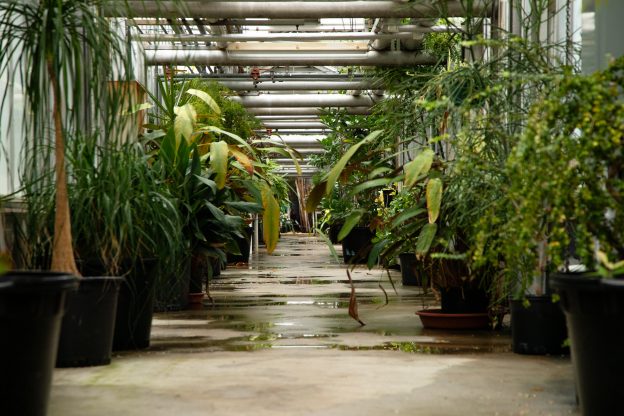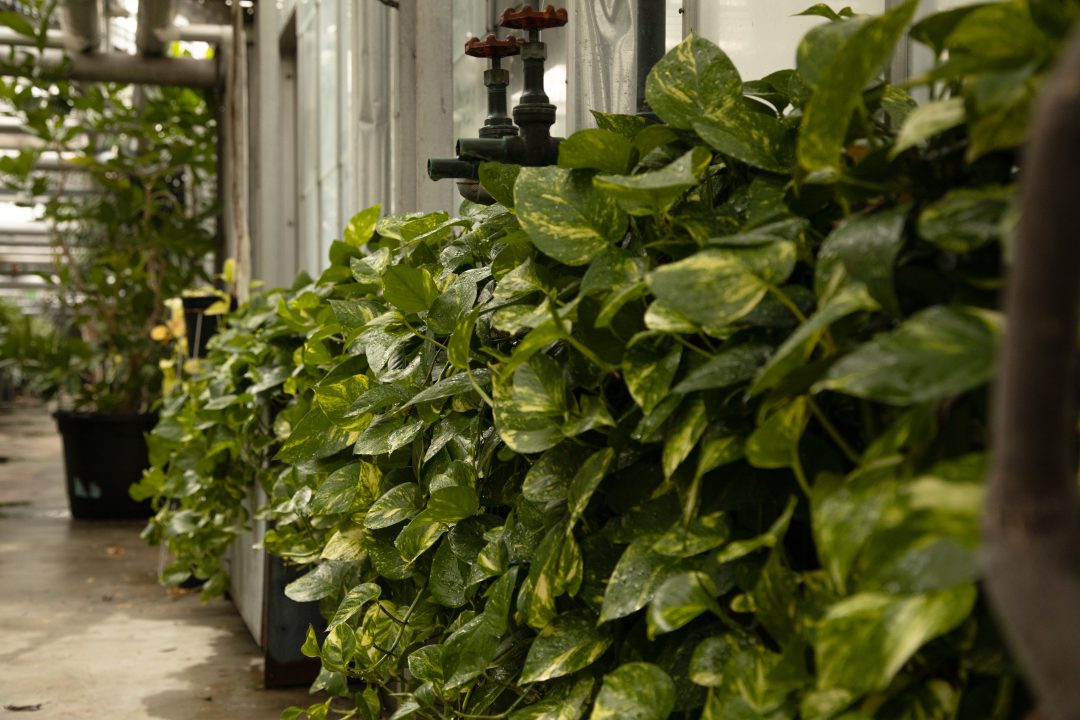
College campuses are striving to reduce their carbon footprints by creating a greener and more eco-friendly environment in the growing fight against climate change.
Stony Brook University has a plethora of initiatives designed to promote a greener campus. These initiatives vary in the form of programs installed throughout campus and range from the food choices offered in student meal plans to the maintenance of dining programs and student clubs.
“Stony Brook University is committed to Sustainability, and has integrated sustainable principles and initiatives into [a …] strategic [p]lan. It has been, and continues to be, a priority for our institution,” University officials said in an email to The Statesman.
Some clubs that promote a greener, sustainable campus are the Stony Brook Environmental Club, the Stony Brook Sierra Club, the Greenhouse Club and the Gardening Club.
The Environmental Club hosts a wide range of activities to petition against climate change such as participating in protests, attending conferences and volunteering to clean up beaches and gardens.
The club’s co-President Ryan Silver, a senior majoring in biology, provided The Statesman with the club’s mission statement: “The purpose of the Stony Brook Environmental Club is to engage students in discussion and recognition of the current state of the environment, the threats it faces and the solutions to those threats. The aim of the club is to encourage participation at general body meetings to promote an environmentally-conscious campus and community. This includes informational presentations, physical exploration of our environment through on and off-campus excursions, seeking out opportunities to get involved with environmental movements/projects and much more.”
The Greenhouse Club’s President, Carmela Cassara, a senior majoring in environmental studies, has also provided its mission statement in an email to The Statesman: “The Greenhouse Club aims to share different aspects of sustainable practices, specifically through the use of our on-campus Greenhouse facilities. Although we are located right in the Life Science [B]uilding, many students aren’t aware of the important projects and research that occur there. Our club aims to educate members in horticulture, ecology, and ecosystems both inside and outside of the greenhouse. Through our work, we emphasize the importance of sustainability and environmental advocacy during our [general body meetings].”
The Sierra Club encourages students to explore and seek information about Earth’s various habitats. One of their goals is to protect the wild components of the planet’s environment.
Program-wise, Stony Brook University and Stony Brook Medicine have won awards for their championing of a cleaner environment; these programs can be virtually anywhere.
Stationed near residence halls and campus facilities are 14 free bike stations (the first hour is free; after that, there is an hourly fee) and 148 refillable water stations that report how many plastic water bottles are being saved from usage.
SBU Eats has also networked a sustainability system on campus.
The campus utilizes a Freight Farm, a hydroponic system that cultivates plants from water-based mineral nutrient solutions to produce food. This system eliminates the need for pesticides that can toxify the product and soil, in addition to using less-fertile soil.
In addition, SBU Eats reports that all distributed food products are bought from local, clean and anti-cruelty sources. As for seafood options, menus are based on the accredited Monterey Bay Watch Program to discern which products qualify as healthy, clean and do not disrupt ecosystems.
A common problem for many campuses is food waste. SBU Eats has worked to track and reduce food waste in the dining halls by “using as much of [the] ingredients’ productivity as possible.”
They also report that records of food inventory and waste are monitored and excess production is distributed accordingly via composting or the partnership between SBU Eats and the Food Recovery Network, a nonprofit organization that aims to reduce food waste by collecting nonperishable items for individuals in need. This initiative tackles two issues at the same time: Stony Brook produces less waste and people will receive what they need, leaving nothing to be wasted.
This academic year, a new policy has been established to make Stony Brook greener; West and East Side Dining now offer reusable take-out boxes.
The boxes are free to use, however there is a fee to take out another box if you haven’t returned your first take-out box. By encouraging reusability instead of disposability, there is less trash to be thrown out, reducing how much waste is dumped onto our environment.
In response to the Going Green boxes, Cassara commented that “It’s a good start; we don’t think it’s the largest impact, but a step in the right direction.”
When asking subject matter experts in the Office of Sustainability about the effectiveness of this policy and other campus measures in an email interview from The Statesman, the general consensus is that Stony Brook is on the right track. But, there is always room for improvement, especially as the New York State legislature enforces new goals and policies.
The Environmental Club is in strong support of these measures, as Silver stated that their “Sustainable Solutions Committee helped initiate its pilot program” in reference to the reusable take-out boxes. Regarding steps for improvement, they “feel it is important to make more systemic changes such as reducing fossil fuel usage around campus and reducing food waste.”
The work done so far to keep Stony Brook green is just a starting point and is continuously evolving. The Environmental Club has already begun tackling the areas they need to feel addressed.
“Our Sustainable Solutions Committee is currently starting projects working to reduce plastic waste, make composting boxes around campus, and improve recycling. We also feel it is important to make more systematic changes such as reducing fossil fuel usage around campus and reducing food waste,” Silver said.
Cassara echoed Silver’s comments with her club’s own hopes.
“One of our more ambitious goals is to encourage the spread of green spaces across campus, whether that be through sustainable study spots or beautiful community gardens,” she said. “We believe there are many wasteful areas on campus that could be used for a more eco-friendly space.”
In an email, Stony Brook University’s Office of Sustainability admitted that there is always room for improvement regarding a greener campus, though they are committed to implementing new methods and strategies as they become available.
“There’s always room for improvement, especially when it comes to living more sustainably. New technologies are continuously being developed, local laws and regulations change from year to year, and the sustainability industry as a whole is uncovering new ways to reduce waste and energy all the time. As new developments occur, there will be a push to increase adoption at Stony Brook and incorporate new processes and ideas into our sustainability efforts,” the Stony Brook Office of Sustainability said in an email to The Statesman.
Part of acknowledging that improvement is needed is being able to define and plan meaningful strides of progress.
The Stony Brook Office of Sustainability said in the email that “[Our] Energy Management team recently developed an Energy Dashboard which allows us to track energy usage by building over time. When we can turn to that data, and see our usage improving year over year, we know that progress is being made.”
They are also continuing to spread subject awareness and education for faculty, students and staff on ways to make the University greener and more sustainable.
A next step Stony Brook is working on is building-produced emissions.
“[Campus facilities produce] nearly forty percent of emissions and a third of global energy demand, which is why it’s crucial to consume energy more efficiently and aim for net zero buildings powered by renewable energy,” the Office of Sustainability said in an email to The Statesman.
The campus has pledged carbon neutrality by 2050 and fulfilled its yearly goals of reducing emissions.
Stony Brook is committed to becoming a green campus. Both the academic campus and hospital have already implemented a multitude of policies but are not distracted from the progress made as they are continuously striving to be greener.











